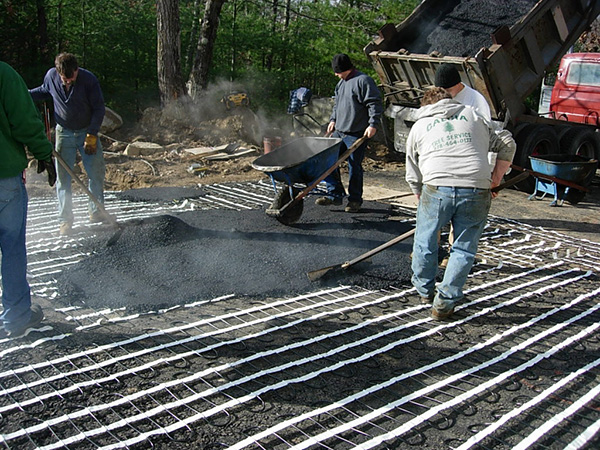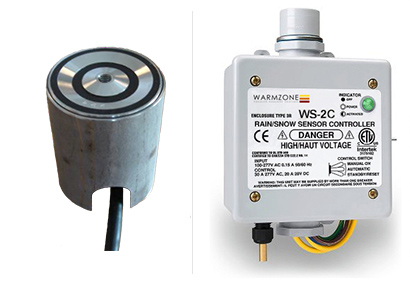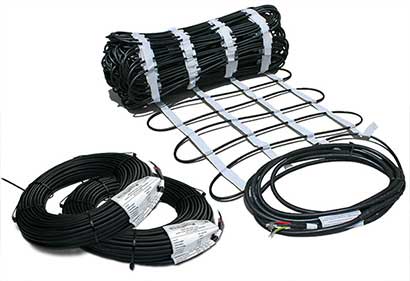How the Best Heated Driveways Work
Fully Automated Radiant Driveway Heating Systems
Chances are that you've seen a radiant heated driveway in operation. During heavy snow storms, regardless of the time of day, you may spot a few driveways that are completely clear of snow and ice - and are even dry. These embedded radiant heating systems enhance safety and keep driveways free of snow and ice around the clock. But they efficiently operate only when conditions warrant.

Radiant heated driveways can be either hydronic or electric, but both driveway heating systems are fully automated, so they efficiently operate only when needed. The content on this page focuses on how electric snow melting systems work. An electric heated driveway consists of three main components: the heating element (heat cable), an activation device (snow sensor) and master control unit / contactor panel.
Heated Driveway Resistance Cable
The best heated driveways use durable, resistance heat cable that is typically available on spools or pre-spaced in mats that can be rolled out for quick, easy installation. ClearZone heat cable is one of the industry's top cables that has a proven track record for heating driveways, sidewalks, steps, ramps, loading docks, etc. The premier heat cable such as ClearZone is designed to be very durable, so it can withstand the stress of concrete pours. A special version of the cable (with an even tougher outer jacket) is also available for installation in hot asphalt applications, making it a favorite among construction professionals. (Important note: Never cut the heat cable during the installation process or your warranty will be void. Call your manufacturer for more details.)
Activation Device (Snow Sensor)

Both aerial-mount and pavement-mount snow sensors are available, but most automated heated driveways utilize an aerial mounted snow sensor. This high-tech activation device detects temperature and precipitation to activate the system only when needed. When moisture is detected and the temperature is below a set point (usually set at 39°F), the sensor sends a signal to the system’s master control unit.
Master Control Unit
After receiving the signal from the snow sensor, the compact master
controller (typically mounted on a wall in the garage) sends power to the heat cable embedded in the
driveway. The electric heat cables warm the driveway quickly, keeping the surface clear of ice and
snow. The system operates for a short time after the storm to reduce the chance of any ice or water
collecting on the driveway. Automated snow melting systems also feature manual override capability
so you can keep the driveway clear if the wind creates snow drifts of some ice forms on the driveway.

Radiant heated driveway systems can be installed in just about any medium, including concrete, asphalt, pavers, decorative concrete, and more. However, some types of heat cable are not intended to be used in hot asphalt applications, so it is important that you work with professionals who offer premium (yet affordable) heat cable that is designed for your application.
Heated driveway systems are easy to customize, giving consumers several options. Systems can be installed to heat the entire driveway, a narrow strip down the middle, or just two tire tracks. Reputable providers will be able to design a custom system that meets your snow melting needs as well as your budget.

 888-488-9276
888-488-9276 info@bestheateddriveway.com
info@bestheateddriveway.com
